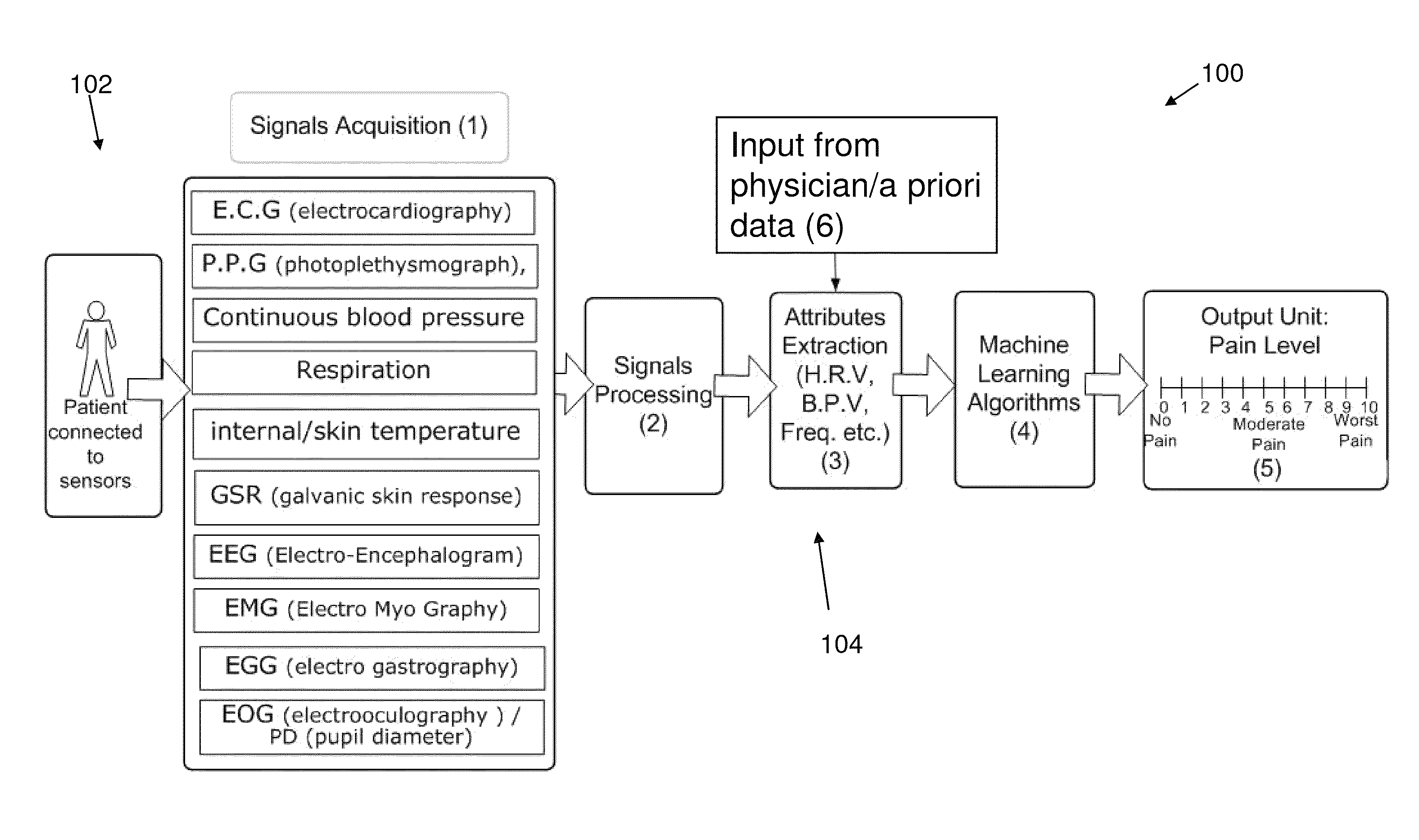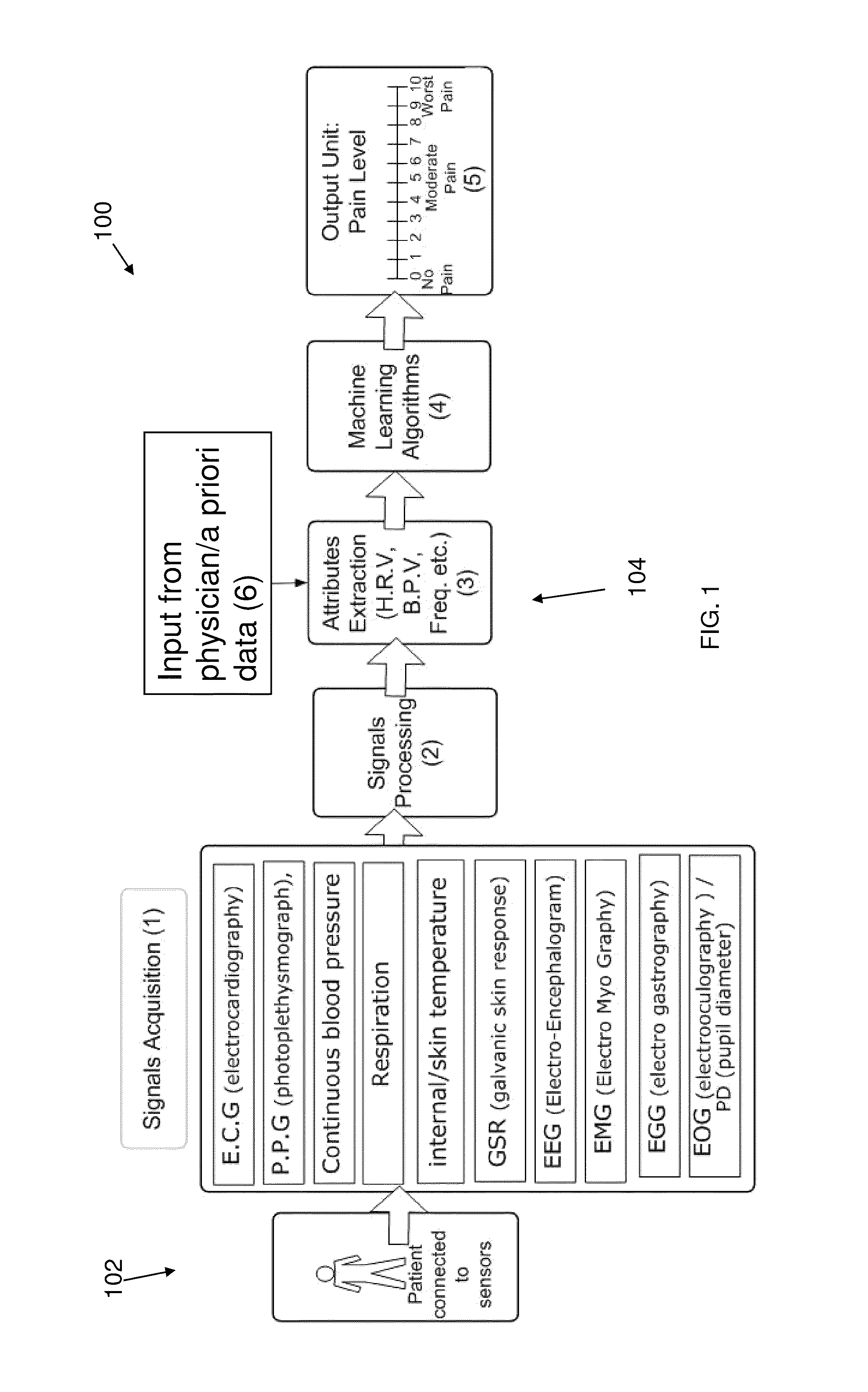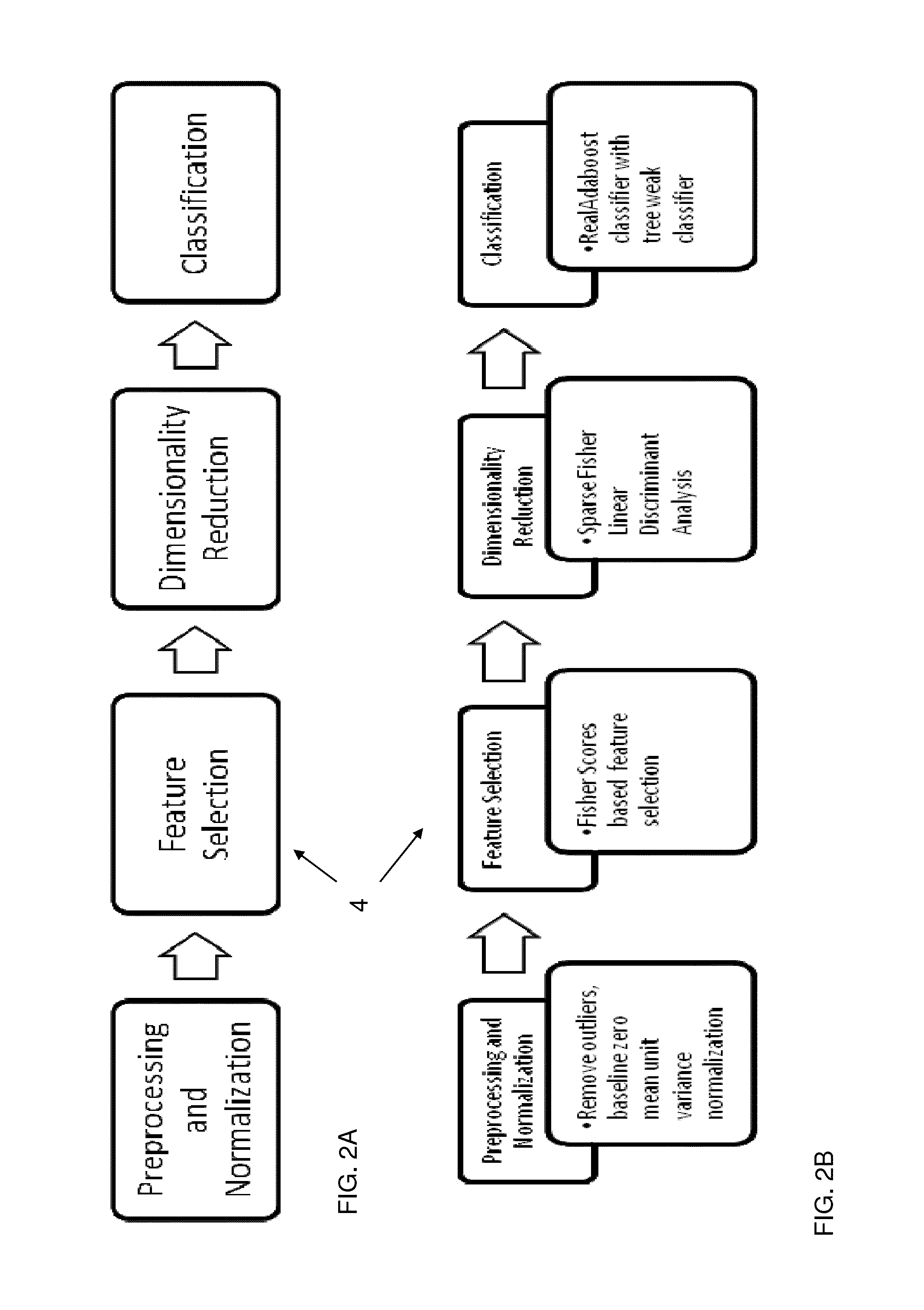System and method for pain monitoring using a multidimensional analysis of physiological signals
- Summary
- Abstract
- Description
- Claims
- Application Information
AI Technical Summary
Benefits of technology
Problems solved by technology
Method used
Image
Examples
example 1
Pain Classification Utilizing a Combination of Fisher Score+SFLDA+RealAdaboost
[0184]The following is a non limiting example of the implementation of pain monitoring according to an optional embodiment of an optional method for pain monitoring and classification according to the present invention. The following example provides an illustrative example of pain classification for pain monitoring in a subject wherein the processing methods comprise utilizing a priori data, feature extraction and selection based on Fisher Score rank, dimensionality reduction using SFLDA, and classification using a RealAdaboost classifier within a Boosting framework.
Materials and Methods
[0185]An experiment was conducted in order to develop, validate performances and evaluate efficacy of the classification method and system for non-invasive automated pain monitoring according to the present invention. Primary outcome measures was to compare the pain monitoring results with the subjective pain report measur...
example 2
Feature Selection and Dimensionality Reduction
[0215]The following example is of a non-limiting example showing the importance of machine learning techniques according to the present invention to improve and provide for pain monitoring, classification and identification. During the clinical study described in Example 1 above all features described in Table 1 were measured. Physiological signals such as an accelerometer, SPO2 were excluded as the clinical study was performed on awake patients. Fisher scores were calculated to rank all available features, according to an optional method of the present invention.
[0216]Analysis of the features showing the following features as having a high Fisher score, as summarized in Table 4 and FIGS. 5A-C.
[0217]As can be seen these parameters represent both an autonomic system activity of a patient (e.g. amplitudes of PPG signal, Count of Spontaneous Fluctuations in GSR signal, H.R.V extracted from PPG or ECG and its spectral analysis) as well as be...
example 3
Pain Classification Utilizing a Combination of Hierarchical Dimensionality Reduction+Random Forest Classification
[0259]The following example is of a non-limiting example showing the importance of machine learning techniques according to the present invention to improve and provide for pain monitoring, classification and identification, as depicted in FIG. 2C wherein the system and method of the present invention comprises a wherein feature selection and dimensionality reduction is provided by Hierarchical Dimensionality Reduction (HDR), and classification is provided by a Random Forest classifier.
Subjects
[0260]The study included 36 healthy volunteers, 23 female and 13 male, aged 20 to 38 years (mean (SD) 26(4.3)). Inclusion criteria were: (I) free from chronic pain of any type, (II) no medication usage except for oral contraceptives, (III) ability to understand the purpose and instructions of the study, and (IV) blood pressure <140 / 90. Exclusion criteria were: (I) any type of preexi...
PUM
 Login to View More
Login to View More Abstract
Description
Claims
Application Information
 Login to View More
Login to View More - R&D
- Intellectual Property
- Life Sciences
- Materials
- Tech Scout
- Unparalleled Data Quality
- Higher Quality Content
- 60% Fewer Hallucinations
Browse by: Latest US Patents, China's latest patents, Technical Efficacy Thesaurus, Application Domain, Technology Topic, Popular Technical Reports.
© 2025 PatSnap. All rights reserved.Legal|Privacy policy|Modern Slavery Act Transparency Statement|Sitemap|About US| Contact US: help@patsnap.com



